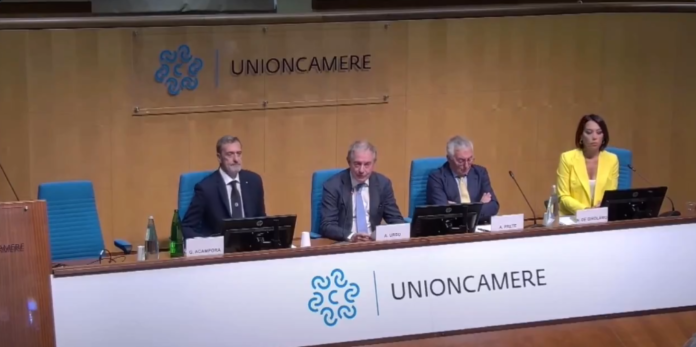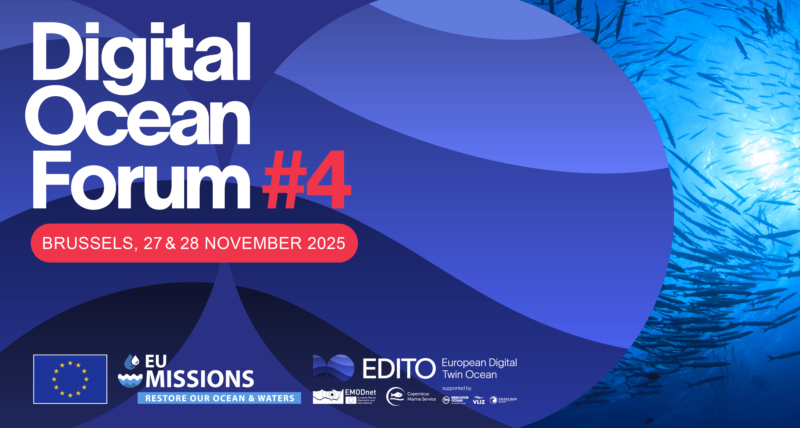Managing the resources of the blue economy, which means sustainably exploiting the resources of the oceans, seas, lakes and rivers, will in part determine our response to the problems of global warming and sustainable development.
The mobilization of research and practical science, including in the field of sustainable development, is one of the keys to this change.
It is crucial to support the development and dissemination of scientific knowledge about the oceans, in order to produce the tools for assessment, planning and forecasting, as well as the development of adaptation strategies for vulnerable coastal and island territories, which are essential if we are to move towards sustainable lifestyles.
Morocco has an Atlantic seaboard, a Mediterranean coastline and a climate divided into seven sub-zones, determined by the country’s different influences: oceanic, Mediterranean, mountain, continental and Saharan, all of which enhance the country’s vegetarian diversification.
The blue economy seems to be a key sector for the Moroccan economy, sports, leisure and the preservation of the biological wealth of Moroccan waters. Nevertheless, in this brief article we offer an overview of the potential of both the Atlantic and Mediterranean seaboards, and the possibilities offered by the blue economy for its development.
The choice of the theme: “The blue economy as a lever for sustainable development in Morocco” is due to the fact that the blue economy has in itself become an option that plays an important role in the maritime environments of a country like Morocco.
This research is based on the following premise: what can the blue economy offer a medium-sized North African maritime town, in this case Dakhla, through an investment that promotes the various local attractions as part of a growth and employment strategy, thus contributing to Morocco’s development. Dakhla, considered a “port city”, also belongs to the “Littoral” tourist region.
Morocco is therefore required to support the blue economy as an economic activity contributing to the eradication of social precarity and a means of economic growth.
We are led to dissect the measures deployed by Morocco to win the bet of sustainable development in Dakhla, taking into account a panoply of factors and climatic, mining, geographical, human and cultural diversity. And by finding the best balance to establish a program of openness to the African continent, while continuing to open up to the world.
- Satisfy the expectations of the population, while achieving optimal articulation of the Dakhla region. With its geostrategic environment, ensuring sustainable ecotourism development for the Dakhla lagoon.
- Make seaside tourism in Dakhla a sustainable development sector, by comparing it with other coastal countries or the Canary Islands, which straddle Europe and Africa.
Coastal tourism
Tourism directly and indirectly generates an increase in economic activity in the places visited, mainly due to the demand for goods and services produced by visitors. The tourism industry generates economic interest and impacts the balance of payments, as well as being a source of foreign currency.
The tools: Morocco has a wide variety of landscapes and a density of natural habitats, with conditions that make it ideal for nature and marine tourism programs. The Moroccan territory is made up of classified areas of great natural value and biodiversity in terms of flora, fauna and the quality of landscapes and the environment. Gastronomy, hotel facilities, safety and security, hospitality and the friendliness of the people are also values that define good tourism promotion in Morocco.
The blue economy is an economic model conceived by the Belgian entrepreneur Günter Pauli, who claims to meet basic needs by valorizing what is available locally and drawing inspiration from the living world. The concept is seen as the new frontier for the economic development of maritime resources. The blue economy has a positive impact on tourism and maritime transport, where growth could be strong in sectors such as offshore energy (natural gas, oil, wind), maritime and coastal tourism, maritime and port infrastructures. In turn, industrial and artisanal fishing, as well as aquaculture, represent a significant source of employability.
The regulatory framework governing coastal development and inland waters
In 2011, Morocco drew up a constitutional reform that gave pride of place to the operationalization of sustainable development. Indeed, there is a panoply of regulatory texts governing the development of natural resources at local and regional level. Morocco has developed an important piece of legislation, Law 49-175 of August 08, 2020 (repealing Law 12-03 of May 12, 2003). The aim of this legislation is to minimize the negative impact of projects and improve ecological sustainability.
The law relating to the coastline, (n° 81-12) came into force in August 2015, which is a real starting point for in-depth reflection on coastal development and the Dahir nº 1-03-59 promulgating law nº 11-03 relating to the protection and enhancement of the environment, whose purpose is to lay down the basic rules and general principles of national policy on the protection of nature and natural resources (soil and subsoil, fauna, flora, biodiversity, continental waters, marine resources and coastline, countryside and mountainous areas, protected areas).
Decree no. 2-17-256 requires each entity in charge of a public service (administration, local authorities, etc.) to set up a structure responsible for receiving and handling user complaints, and for documenting this handling. This structure must have the skills and logistical resources to carry out its work effectively; the ESES and PEB blue economy program are the reference frameworks for all government action.
In the government program, the blue economy is to be presented as a comprehensive cross-sectoral development framework for coastal and marine areas, where sectors and regions will cooperate to maximize the benefits of sustainable use of marine and coastal assets. A national blue economy strategy will define the program’s vision, long-term objectives and general guidelines. During the initial phase, the program will be guided by sectoral strategies and the recommendations of the Economic, Social and Environmental Council (CESE). The government’s Blue Economy Program (PEB) will include policy interventions and investments, which will be allocated according to the potential of each region. The program will encourage domestic and foreign investors to develop the blue economy and support public-private partnerships. A first phase of the government program started in 2021 by aggregating ministerial program budgets (2022-2026), with an estimated amount of US$2 billion, in line with the activities proposed in their respective budget plans (performance projects – PDP).
Tourism and leisure in Dakhla and other coastal towns

The notion of “tourism product” is linked to specific types, such as culinary tourism, ecotourism, urban tourism, “sun and sand” tourism, agrotourism, health tourism, winter tourism and so on. This classification is increasingly used as a marketing tool.
Since 2016, Dakhla has hosted the Crans Montana Forum, an event that has attracted hundreds of thousands of international managers and decision-makers. The aim here is to capitalize on such events to convert these visitors into tourists and extend their stay in Dakhla.
The planning
The tourism potential of the Moroccan coast (Tangier, Saïdia, Nador, Larache, Mazagan, Essaouira, Agadir, Dakhla), forms a realistic project for a resort and leisure center. In terms of attractiveness, all these towns have something going for them, from solid infrastructure to gastronomy, crafts, museums, leisure and entertainment facilities, cultural events and adequate hotel accommodation.
Communication channels
The Dakhla region boasts businesses with expertise in their respective fields (hotels, restaurants, entertainment facilities and museums), a trend that is confirmed by the increasing use of new technologies, such as the Internet, and ICT (Facebook, YouTube, Twitter or Trip Advisor), which are the main networks for finding information about a tourist destination or service. By using information technologies, Africa’s youth can make a significant contribution to innovation and the creation of tomorrow’s knowledge society. Tourism is therefore undoubtedly a cross-cutting activity, with a strong territorial impact, covering a multitude of tourism agents at the crossroads of sectors that depend on its economic, social and environmental sustainability.
Costal tourism, an asset for the development of Dakhla and Region
Since the 90s, the public authorities have been upgrading the seaside offer, and new resorts have sprung up under the Azur plan: Station Mediterrania Saïdia, Port Lixus, Mogador Essaouira, Taghazout-Argana Bay, Mazagan Beach Resort, Plage blanche-Guelmim.
But the Saharan coasts are now the focus of Saharan tourism, with its water sports and incentive variants.
Dakhla lagoon and beaches: Lassarga, Legzira, Porto Rico, the idyllic Aarich beach, Foum Labouir beach, Laâyoune beach (500 km north of Dakhla).
The diversity of visitor motivations and destination attractions leads to the need to establish relationships between different types of tourism, a fortiori in a region as renowned as Dakhla.
Is the experience of the Canary Islands an example?
The aim is not to copy a successful experience, but to draw inspiration from a model that straddles Europe and Africa: the Canary Islands, under Spanish sovereignty, but located in the southern hemisphere and facing the Moroccan coast. Benchmarking is seen as a tool for improving performance, enabling us to make the right decisions by learning from previous experience.
This study will enable us to reveal the Canarian product firstly through its tourism characteristics; Las Palmas de Gran Canaria received nearly 4.5 million tourists with a foreign currency inflow of almost 5 billion euros, and all the islands together receive up to 14 million tourists, with revenues generated approaching 12 billion euros (2018 estimate). Thanks to the emergence of mass tourism, charters and low-cost flights, tourism has become an integral part of traditional urban activities. But it’s the resorts (large, integrated complexes) that are developing more and more, as isolated establishments or “urbanizaciones” of various kinds.
There’s no doubt that the contribution of the blue economy and seaside tourism to local development in small and medium-sized maritime towns has a positive impact on several sectors: the economy, agriculture, social development and tourism. The blue economy offers a wide range of products in the tourism and seaside sectors, as well as in fisheries production, which is in itself a factor in local development. In Dakhla, we were able to analyze its importance for Morocco and its strategies. We also made reference to local constructions underway or in the pipeline to further address the capabilities of the tourism sector in the Dakhla region.
We can therefore conclude that the city should no longer be sought after solely for its rich heritage. Politicians of all stripes need to join forces with tourism professionals to focus on key themes. With the help of the public authorities, tourism professionals and the private sector can find a better way of ensuring that Dakhla becomes known not only for the events that take place there every year, but also and above all for its rich tourist and ecological potential. We also need to raise the awareness of the local population to make tourists feel at home, which is very easy to do in the town of Dakhla, avoiding the mistakes seen in other areas where multiple and repeated nuisances (false guides, begging, snatching, etc.) have ended up ruining an entire destination. It would be a good idea to set up a monitoring and watchdog structure to support the development of the tourism sector, and to ensure that this sector is seen as a lever for local development in medium-sized towns like Dakhla.
Source: Le Collimateur



